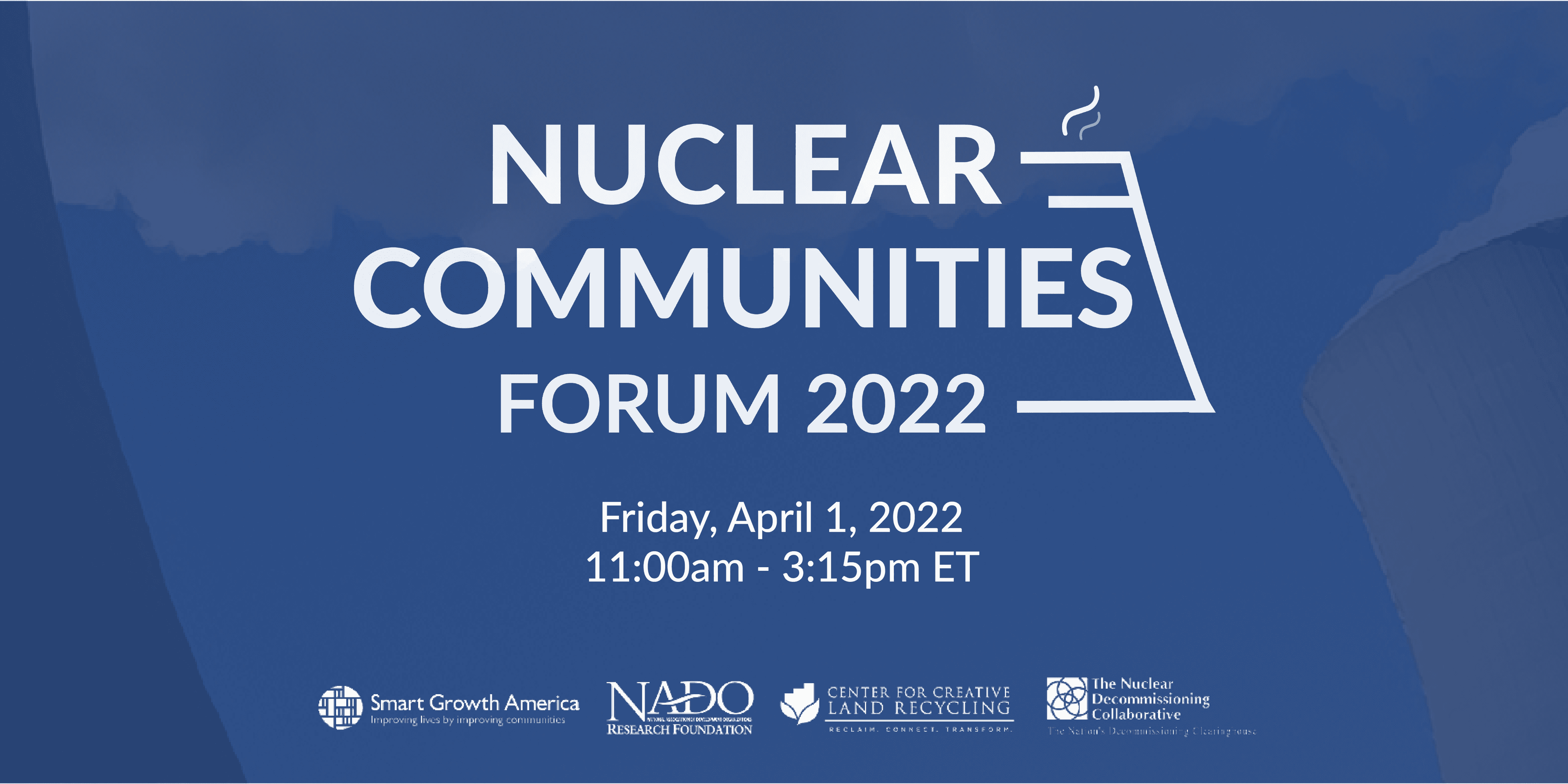
News
By Megan Wright, March 24, 2022

As we reported a year ago, the operational status of nuclear power plants across the country runs the gamut: from stations that have long been closed, to those that will be closing soon or perhaps not for decades into the future. While each host community has its own unique set of circumstances, obstacles, and opportunities, we are seeing some patterns emerge.
“There is a steep learning curve for communities undergoing nuclear power plant closure. Our role is to help communities on the path towards economic resilience and towards autonomy.”
– Jim Hamilton, Nuclear Decommissioning Collaborative
The closure of a nuclear power plant is an economic decision.
When a nuclear facility is no longer profitable, it is common for the utility company to decide to close the plant. Following closure, decommissioning is a long, complicated process that tends to leave little room for host communities to participate in the reconfiguration of their economy. After the former nuclear site has been cleaned up, spent fuel remains there for a much longer time and the community is left with a highly regulated property that is difficult to put into productive reuse. This represents a legacy cost that isn’t seen in other industries. Without a clear sense of direction, host communities are driven to undertake this enormous challenge without much awareness about the steps necessary and resources available to address it.
During a conversation framing the Nuclear Communities team’s role in this space, Nuclear Decommissioning Collaborative’s (NDC) Executive Director Jim Hamilton reinforced our team’s mission to help host communities—at every stage of the process—realize that they are not alone. Although nuclear power plant closure runs parallel to other large industries leaving town, we have found several issues unique to the context of nuclear host communities:
Workforce differences
First, the workforce at any given nuclear power plant is highly specialized and well-educated. When the plant closes, these workers and their families tend to leave the host community for other nuclear-related employment opportunities. What follows is a trickle-down effect of decreased school enrollment, decrease in housing values, and disturbances in the rental versus. home-owning market. As nuclear plants tend to be located in small communities that are often rural and far from urban centers, these effects compound into more and more negative socioeconomic impacts.
Loss of local revenue
“With plant closure comes a large loss of tax base for the local government.”
– Jim Hamilton, Nuclear Decommissioning Collaborative
Although industrial utility taxation differs from state to state, the closure of the single-largest employer and land owner in a community has a substantial impact on tax revenue. For example, in the City of Zion, Illinois, taxes from the Zion Nuclear Power Station accounted for 50% of the local budget. Similarly, the Maine Yankee plant in Wiscasset, ME, generated over 90% of its host community’s annual revenue. These blows to the local budget are felt severely by the public operations that keep the community running, making an economic transition that much harder to navigate.
Site reuse issues
Even after the plant has been closed, the property site has its own challenges. While the decommissioning process leaves the site suitable for industrial reuse, the presence of spent nuclear fuel (from the plant’s operations) tends to discourage site reuse. These legacy issues, and the corresponding opportunity costs from not being able to redevelop the site, will remain until the federal government retrieves the spent fuel. If you’re interested in learning more about options for site redevelopment, join Smart Growth America on April 5th for the Equitable Brownfields Redevelopment event!
“There isn’t a fellowship for nuclear closure communities, so we need to create one.”
– Cindy Winland, Nuclear Decommissioning Collaborative
Cindy Winland, Director of Community Revitalization at NDC, has been involved with a wide range of industrial plant closures over her 30+ year career. In comparing the similarities in how nuclear and other energy plant closures are addressed, she noted that in all instances, communities must plan for economic adjustment as early as possible, and as said in our latest blog: “the time to fix the roof is when the sun is shining”. Setting intentionality around early planning helps guide host communities to funding sources that can support these plans and prioritize independence from a single dominant employer.
Cindy wrapped the conversation by highlighting that, in order to achieve an inclusive and successful economic transition, the process should be democratized and grounded in community education and engagement. The existing decommissioning regulations tightly limit the public’s ability to meaningfully affect project outcomes—often including the very same people who are responsible for making some of the toughest decisions. There is a steep learning curve involved in the closure of a nuclear power plant, and local leaders need all the support they can get to understand better avenues of influence and lead their community towards a prosperous post-closure future.
The Nuclear Communities Forum is meant to connect communities through these shared experiences and to explore solutions to different pieces of the nuclear decommissioning puzzle, ensuring that these places are not left behind as a result of a national energy transition and local and economic shift.
Join the conversation on April 1, 2022 from 11:00am-3:15pm ET and tune in over the next few weeks to learn more about the Nuclear Communities team’s accomplishments and opportunities.

Related News

© 2025 Smart Growth America. All rights reserved
Site By3Lane Marketing










